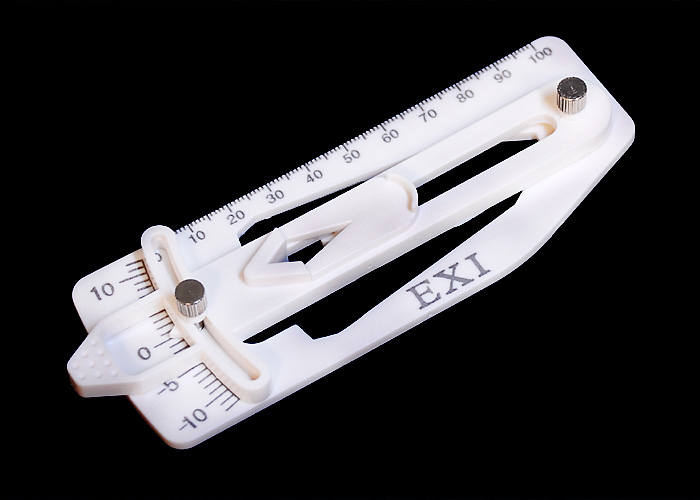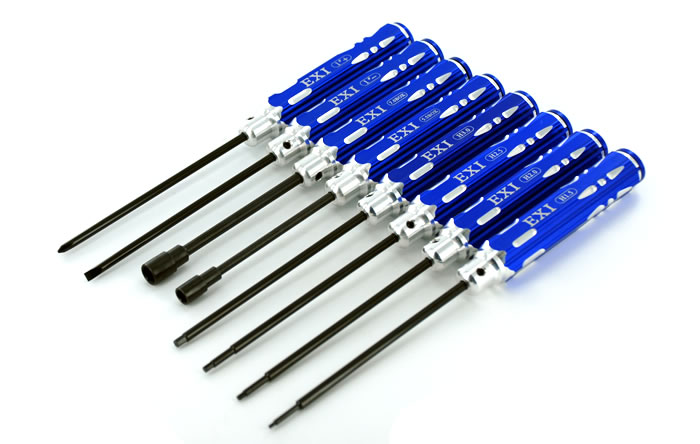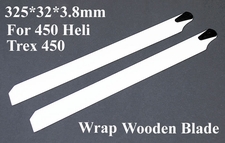 |
FREE SHIPPING OVER $30, ALL ORDERS SHIPPING FROM USA WAREHOUSE
SEVEN MOST IMPORTANT TOOLS FOR RC HELICOPTERS SINCE THIS HOBBY REQUIRES SO MUCH BUILDING, NATURALLY THERE IS A WIDE VARIETY OF TOOLS THAT MUST BE OWNED in order to be able to build and maintain a helicopter. Even though there is a vast number of tools that can be used, there are only a core few that required to get the job completely done. Those core sets of tools are widely seen at every flying field and shouldn?t be left out of the anyone?s toolbox. In this Tools of the Trade, we will break down seven very important tools that will help build and maintain your helicopter at all time.
1. PITCH GAUGE - Even
though some talented people out there are able to eyeball their pitch, there is
a gauge for the rest of us (thankfully). A pitch gauge is very important
in making sure that you have your head set up properly and don't have an uneven
pitch range for a balanced helicopter. Pitch gauges come in various shapes
and sizes, so find one that suits you best, and keep it in your tool box just in
case.
2. HEX DRIVERS - This is perhaps the most important set of tools in your toolbox. Hex drivers are used for just about everything. In most modern-day helicopters, all bolts have a hex head on them that makes them easier to tighten and remove. The most common sizes are 1.5mm, 2.0mm, 2.5mm, and 3.0mm. It is very common to see 2.5mm heads on almost all applications on larger helicopters. 3.0mm heads are used for items such as spindle bolts and blade bolts. 2.0mm heads are seen on specific applications that vary from helicopter to helicopter. 1.5mm heads are usually the universal hex driver on micro-helicopters.
3. GLOW PLUG WRENCH -
Anyone who flies nitro helicopters knows that changing glow plugs is fairly
common but can be hard if you don't have the proper tools. The unique
feature of a glow plug wrench is its lenght, which allows you to unscrew the
glow plug from a distance without obstruction. Most plug wrenches can be
found at your local hardware store and uses a t-shaped handle.
4. CUTTERS/DIKES - When
doing things such as dressing your wires with zip ties, you'll need a set of
dikes or cutters in order to cut the remaining strand. There are many
situations where cutting may be needed. Whether it be cutting tape for
your gyro or fuel tubing, you'll need to use some sooner or later. Dikes
are ideal for cutting thanks to their size and smaller heads that make it easier
when cutting around wires.
5. BALL-LINK PLIERS - These
pliers are very important tool that makes un-popping and popping ball links
together much easier! Even though many of the links in the head can be
popped off with your hand, it often becomes a tough task and can get quite
annoying. Since tracking adjustment is very common, ball-link pliers
become quite handy. Not only can they be used to pop links, but also most
of the time they have groves and cutters integrated into them. The groves
work well for gripping ball-link rods when building links to prevent them from
spinning.
6. NUT DRIVER - RC
helicopters use a wide variety of nut and bolt applications, so a nut driver
comes in handy for tightening down these applications. Even though pliers
can be used in some of these cases, nut drivers prove to be much easier to use
in hard-to-reach areas and are just more efficient. The universal size for nuts
on a larger helicopter is 5.5mm, so the 5.55 driver is the most commonly used.
You'll most likely use an 8 mm driver for the blade bolt nuts on a .90 size, so
it will come in ahndy to have one of those in your toolbox, as well. you
might find smaller sizes on micro-helicopters, so look up the size in your
manual and get a driver that corresponds with the proper size.
7. CLASSIC SCREWDRIVERS
- Even though screwdrivers are not as commonly used as hex drivers, you will
usually run into something during a build that will either require a Philips or
flat-head screwdriver. Sometimes there's a pesky helicopter that will
require a Philips for the entire build. Philips are a little tricky to use
because using them makes it easier to strip out the screw heads, but they do
become necessary on our helicopters, so it is important to have a few in various
sizes in your toolbox. Customers Also Bought These Best Sellers |






